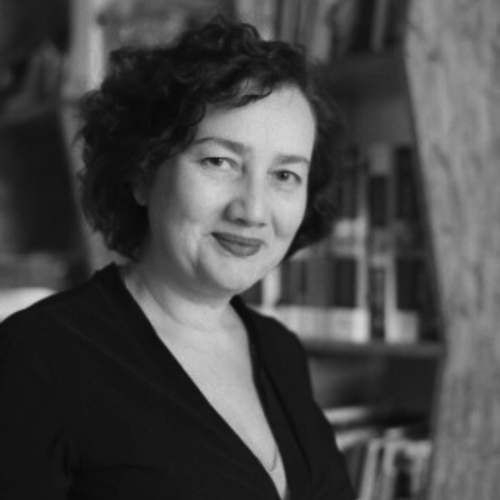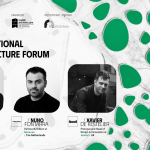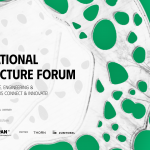MEET THE SPEAKER at SHARE Georgia Forum 2024 \\ Anouk Legendre, Founder XTU Architects, France
Anouk Legendre, architect, geographer, and co-founder of XTU Architects, will be one of the most remarkable presences at the inaugural edition of SHARE Georgia Forum 2024 programmed on the 11th October, joining the event as a speaker and presenting her extraordinarily innovative approach to architecture.

Anouk Legendre is an architect, geographer co-founder with Nicolas Desmazieres of the architecture firm XTU Architects based in Paris and also academician at l’Académie d’architecture. She is an emblematic figure in the contemporary architectural field, standing out through her discoveries, innovations, ground-breaking researches, ebullient creativity and bold architectural attitudes. She left a strong mark on a global level in shaping the encounter between architecture, science and nature, being invested along with the team at XTU in urban agriculture and experimental research which lies between the life sciences, ecology, architecture and urban development. Having the clear conviction that living organisms and biotechnological transition will generate the revolution of tomorrow, XTU architects are deeply engaged in the themes of bio-inspired and photosynthetic architecture, in developments of bio-facades for cultivating plankton species on the exteriors of buildings and in the creation of new architectural ecosystems.
XTU architects demonstrate their ethos through every endeavour and detail of their work, starting from the very name of the office: X representing the unknown mathematical variable and TU standing for the suffix in situ – references to the geography and the landscape of work done by the founders of the office. The language of forms used in the architectural project is the strongest expression of their approach. They believe that “curves and vortices shape the world”, just as they observed by studying the landscape of Icelandic mountains and glaciers, where the curves appear suddenly among sharp edges. “The Icelandic landscape”, they say, “is the cradle of a new way of approaching a project, through human, tectonic, meteorological and temporal flows.” Beyond these flows, the architectural resources stand in the natural and the living.
Similarly, their architecture enables the surprising presence of curved dynamics, free and organic shapes, complex geometries, while integrating flawlessly parametric design and being also responsive and adaptable to the urban context and landscape around it. They treat the building as an organism in itself and the facades as the building’s ‘organs’ (that can nurture, for example, the cultivation of microalgae).
The portfolio of XTU encompasses many innovative projects, as expected, including beyond academic specialisation and environmental research many residential and cultural buildings: several museum projects such as the Jeongkok Museum in South Korea, the Museum of Civilizations on Reunion Island and the Cite du Vin Museum in Bordeaux. The firm was also responsible for the French Pavilion at the Milan Expo in 2015.
Their work has been widely recognised and received numerous accolades. Among the award projects there are: Jeongok Prehistory Museum in South Korea (award from the Korean Academy of Architecture), the France Pavilion during the Universal Exposition Milano 2015 (Architecture and Landscape Gold Medal, in the “Pavilions above 2000 m²” section, from the Bureau International des Expositions.), Cité du Vin à Bordeaux in France (Honourable Mention in the National Prize for Wooden Construction 2017) and many others.
One of the most incredible projects undergone by XTU Architects remains La Cité du Vin in Bordeaux, an iconic building which strikes through its curvaceous forms evoking the liquid nature of wine, “seamless roundness, intangible and sensual”. The sensorial approach and the intention to transform architecture in an over-arching immersive experience capable of triggering a series of sensations are evident in every design gesture. La Cité du Vin is spatially shaped by symbols of identity: gnarled vine stock, wine swirling in a glass, eddies on the Garonne, managing to transgress the idea of good wine and good architecture and to become innovation.
Tickets can be purchased here.



















